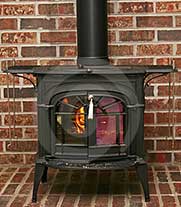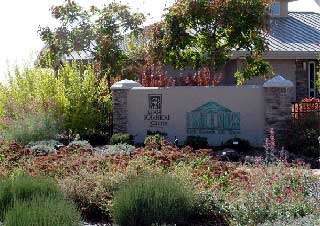The New House: Interior and Exterior
The house is built. The next steps for energy efficiency are selecting the heating and cooling systems. But there are other ways to influence heating and cooling. Landscaping can help keep a house cooler in warm temperatures, and protect it from cold winds in the winter.
Heating and Cooling
Once the envelope of the house is built, the next step is selecting heating and cooling systems. A new house that incorporates passive heating and cooling techniques, such as thermal walls, venting windows, and thermal chimneys, can save the owner a lot in energy costs. However, heating and cooling systems are still needed almost everywhere.
In temperate climates, homes need heat and hot water, while in hot climates, only hot water is required. Some countries rely on district-wide systems, as is common in Russia. In many other places, each home has its own system. Standard systems for providing heat and hot water can run on electricity, oil, natural gas, or coal. Energy-efficient equipment is available for any of these systems.
Air-conditioning systems have changed the way we live. In temperate climates, many people rely on air conditioners to make the hot summers comfortable. Extremely hot regions, which were long considered barely hospitable to humans, are now comfortable year-round. Air conditioners require a lot of electricity and add considerably to energy use. Energy-efficient air-conditioning systems—for single rooms or whole houses—can help.
|
Wood-burning stoves are a relatively inexpensive way to heat a room, if wood is readily available. |
If air conditioning is not an option, ceiling fans can help a room feel cooler by moving the air around. (If a home has high ceilings, a ceiling fan can also be used in winter to push down warm air that rises.) A whole-house fan pulls cooler evening air in through the windows and pushes it out through the attic via vents.
Concerns about energy costs, renewability of resources, and polluting emissions have led many people to look at other options. In the colder regions of North America, some homeowners supplement their heating systems with woodstoves or pellet stoves. In warm climates that have many sunny days, solar panels sometimes provide electricity or hot water for homes. Wind can also be used as a source of energy, although this requires a major investment for the individual homeowner. In addition, steady winds averaging a minimum of 18 to 21 km/h (11 to 13 mph) are required to run a turbine.
One of the most energy-efficient heating and cooling systems available is a geothermal heat pump. (Link to Geothermal article) This type of system takes advantage of the constant year-round temperature of about 10°C (50°F) just a few meters underground. In the winter, a geothermal system moves warmed air and water into the house; in the summer, it moves heat from the building into the ground. One drawback to this system is that it is powered by electricity.
Landscaping
|
Photo courtesy of Utah House Utah House, in Kaysville, Utah, was built by Utah State University as a way to demonstrate energy efficiency in building. The house combines a variety of techniques to reduce energy use. One of these techniques is to plant deciduous trees near south- and west-facing exposures. The leaves on the trees shade the house in the summer, and let sunlight enter in the winter, when the leaves are gone. |
Landscaping is an equally important component to the energy efficiency of a home. In cooler or temperate climates, deciduous trees (the kind that lose their leaves in the winter) on the sunny side of the house will provide protection in the summer; once they lose their leaves in the winter, the Sun will reach and warm the house. Windbreaks planted on the windy side of the house can help reduce heating costs. Windbreaks can be evergreen trees and shrubs, things that will protect the house in the winter.
|
|
|
 |
Digging Deeper |
|
|
|
Landscaping requirements differ for humid and dry climates. Humid climates need shade year-round, but also trees and shrubs that allow breezes to get to the house. In dry regions, shade is important, but the trees and bushes also need to let winds through to cool the house. Using plants that are native to a region makes energy-efficient landscaping easier.
This content has been re-published with permission from SEED. Copyright © 2025 Schlumberger Excellence in Education Development (SEED), Inc.



